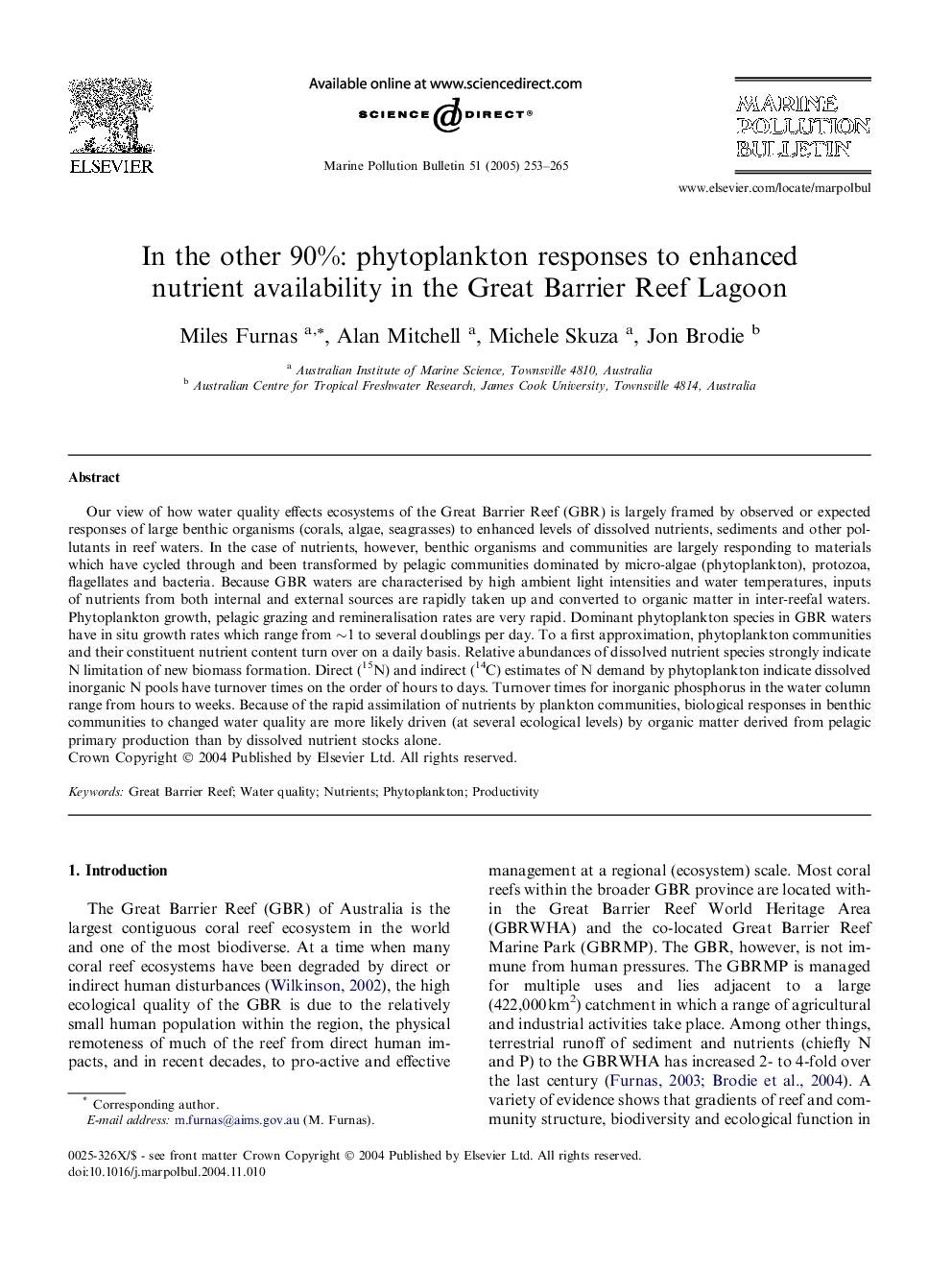| Article ID | Journal | Published Year | Pages | File Type |
|---|---|---|---|---|
| 9465882 | Marine Pollution Bulletin | 2005 | 13 Pages |
Abstract
Our view of how water quality effects ecosystems of the Great Barrier Reef (GBR) is largely framed by observed or expected responses of large benthic organisms (corals, algae, seagrasses) to enhanced levels of dissolved nutrients, sediments and other pollutants in reef waters. In the case of nutrients, however, benthic organisms and communities are largely responding to materials which have cycled through and been transformed by pelagic communities dominated by micro-algae (phytoplankton), protozoa, flagellates and bacteria. Because GBR waters are characterised by high ambient light intensities and water temperatures, inputs of nutrients from both internal and external sources are rapidly taken up and converted to organic matter in inter-reefal waters. Phytoplankton growth, pelagic grazing and remineralisation rates are very rapid. Dominant phytoplankton species in GBR waters have in situ growth rates which range from â¼1 to several doublings per day. To a first approximation, phytoplankton communities and their constituent nutrient content turn over on a daily basis. Relative abundances of dissolved nutrient species strongly indicate N limitation of new biomass formation. Direct (15N) and indirect (14C) estimates of N demand by phytoplankton indicate dissolved inorganic N pools have turnover times on the order of hours to days. Turnover times for inorganic phosphorus in the water column range from hours to weeks. Because of the rapid assimilation of nutrients by plankton communities, biological responses in benthic communities to changed water quality are more likely driven (at several ecological levels) by organic matter derived from pelagic primary production than by dissolved nutrient stocks alone.
Related Topics
Physical Sciences and Engineering
Earth and Planetary Sciences
Oceanography
Authors
Miles Furnas, Alan Mitchell, Michele Skuza, Jon Brodie,
